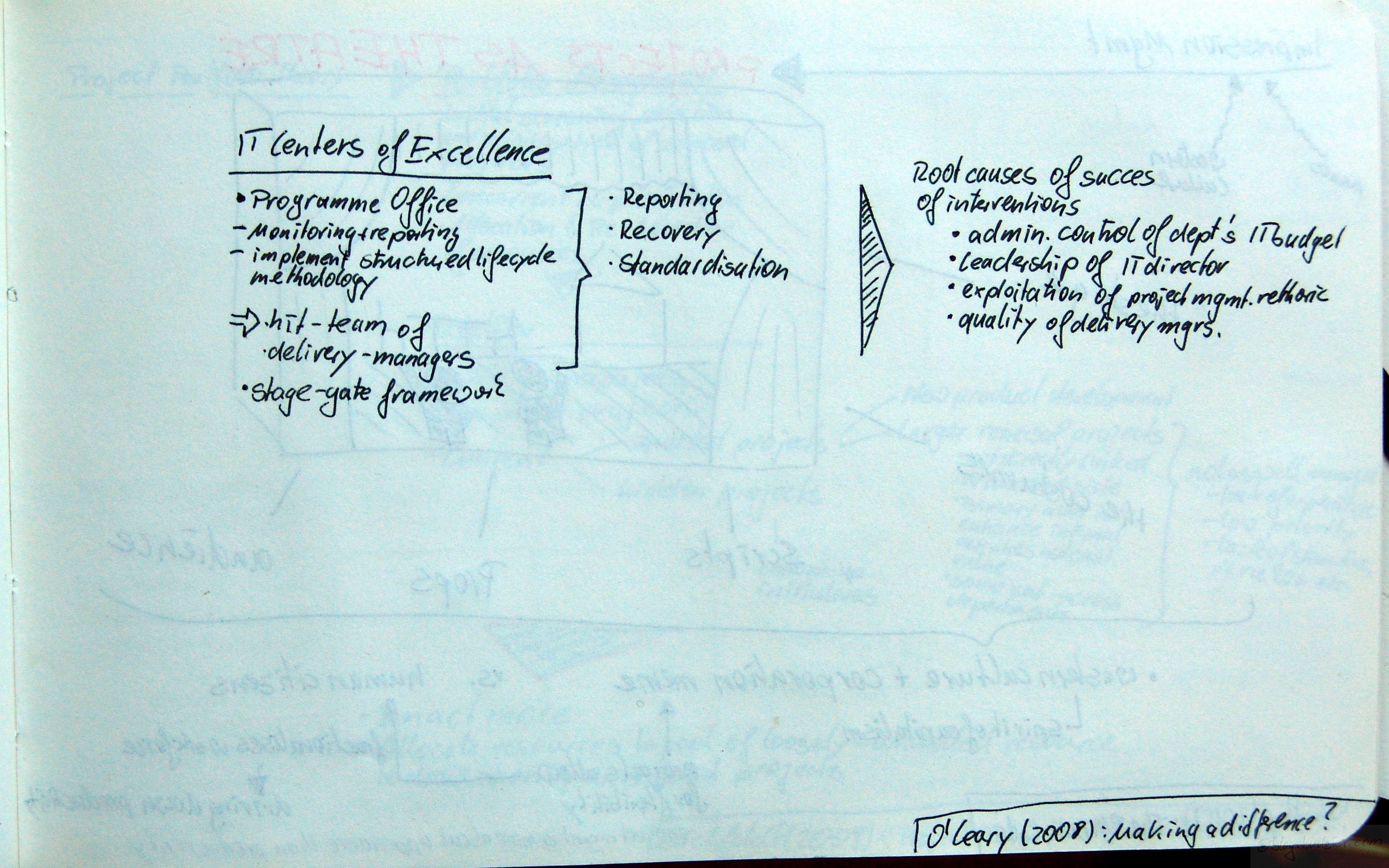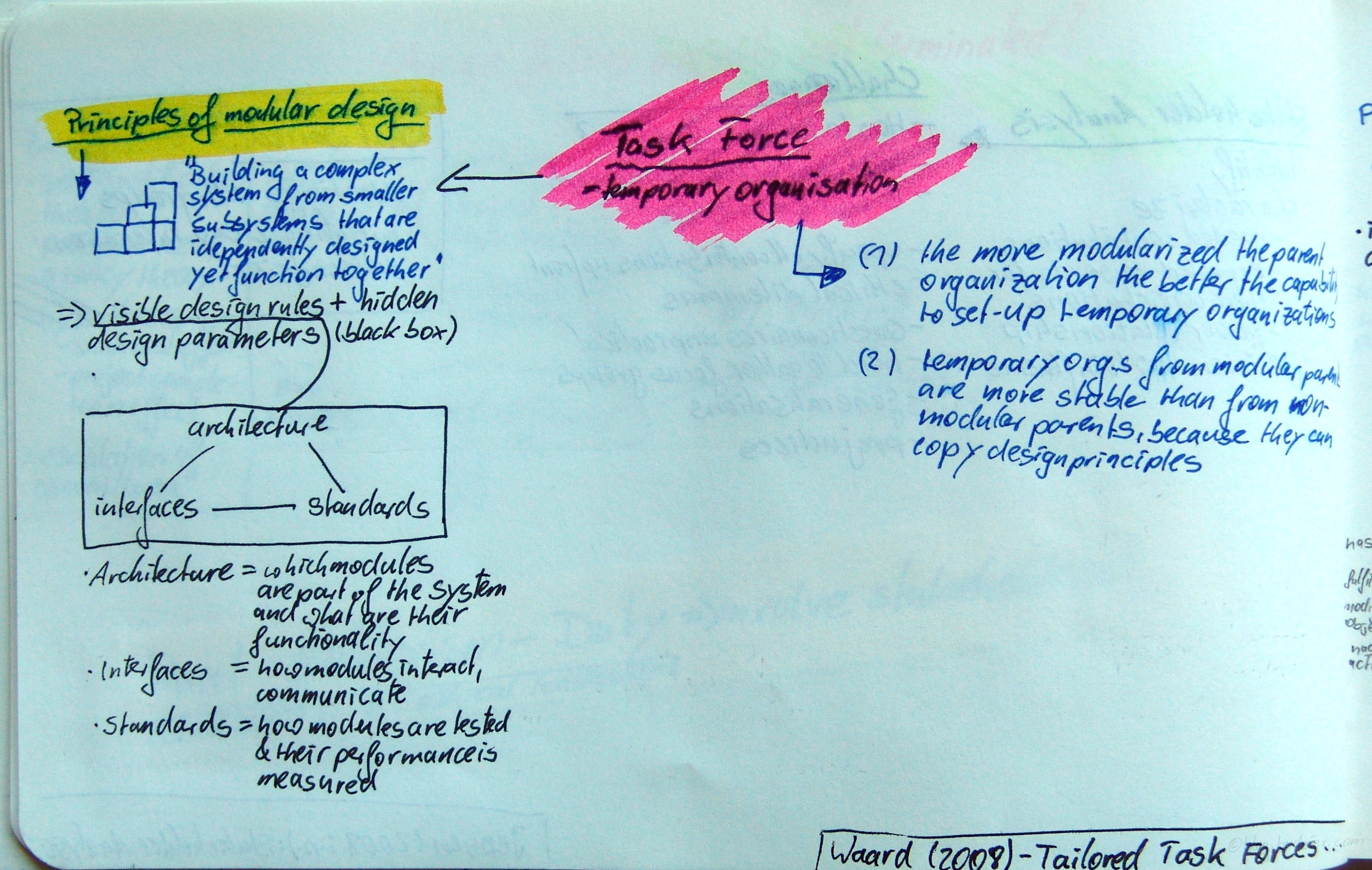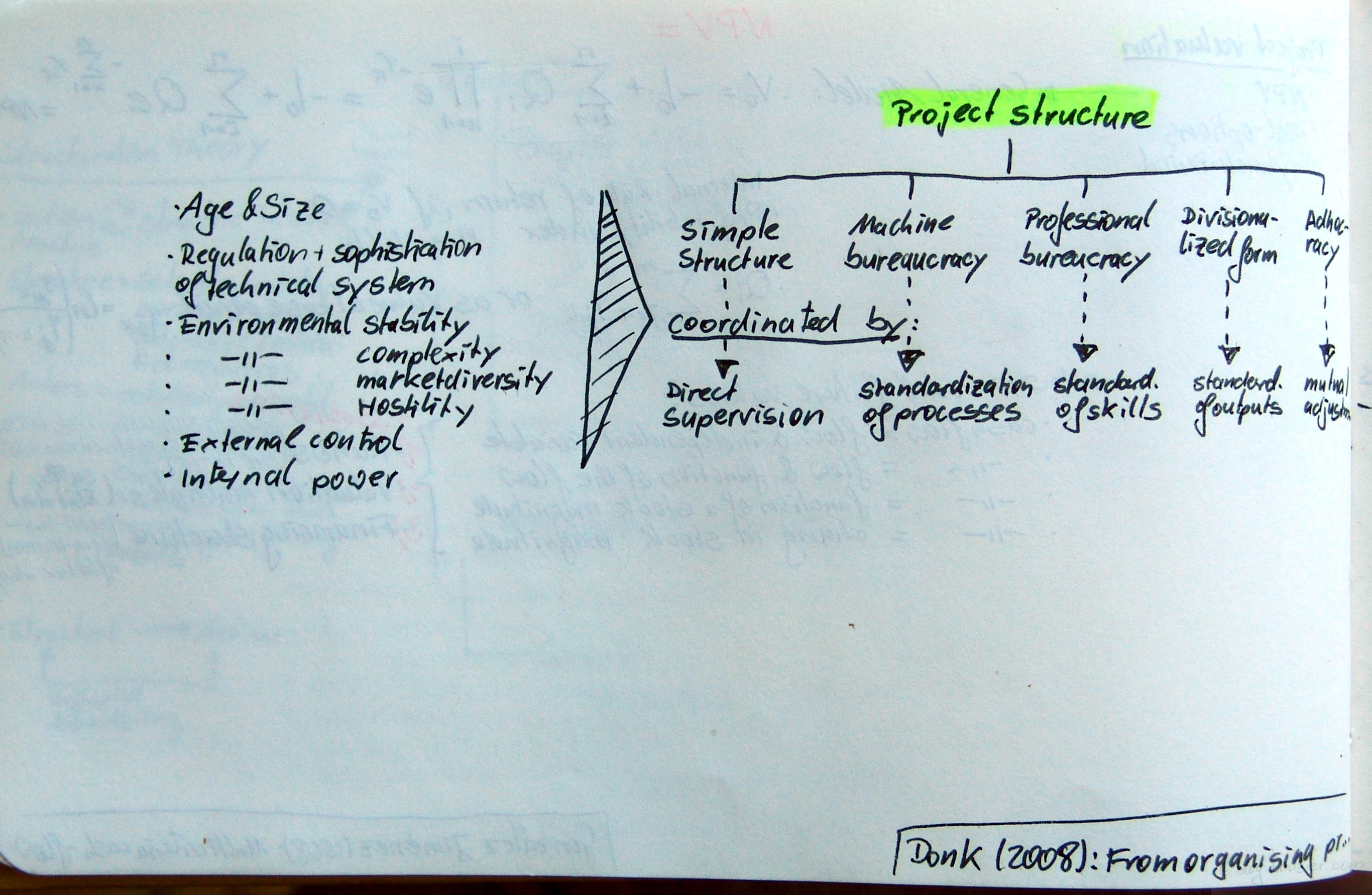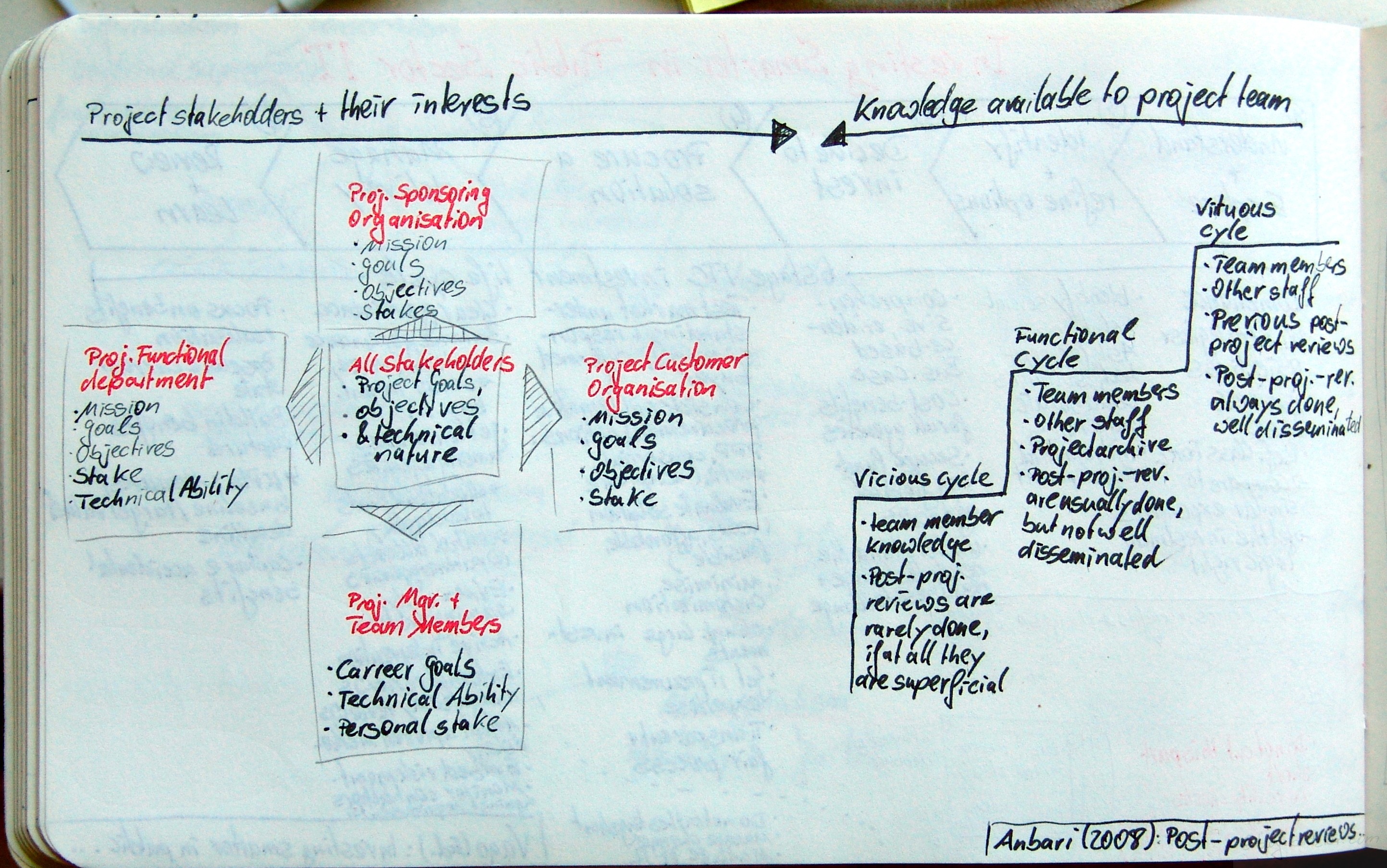O’Leary, Tim; Williams, Terry: Making a difference? Evaluating an innovative approach to the project management Centre of Excellence in a UK government department; in: International Journal of Project Management, Vol. 26 (2008), No. 5, pp. 556-565.
http://dx.doi.org/10.1016/j.ijproman.2008.05.013
The UK has rolled out the ambitious programme of setting-up IT Centres of Excellence in all its departments. Focal point of these Centres of Excellence are Programme Offices.
The role of these Programme Offices has been defined as: Reporting, Recovering & Standardising.
The objectives for the programme offices are monitoring and reporting the status of the IT initiatives in the department, and implementing a structured life cycle methodology. This methodology ties in with a stage-gate framework that needs to be introduced. Additionally hit-teams of delivery managers have been set-up to turn-around ailing projects.
O’Leary and Williams find that the interventions seem to work successfully, whereas the reporting and standardisation objective has yet to be fulfilled. Moreover the authors analyse the root causes for this success. They found that the basis of success was:
- Administrative control of department’s IT budget
- Leadership of IT director
- Exploitation of project management rhetoric
- Quality of delivery managers



